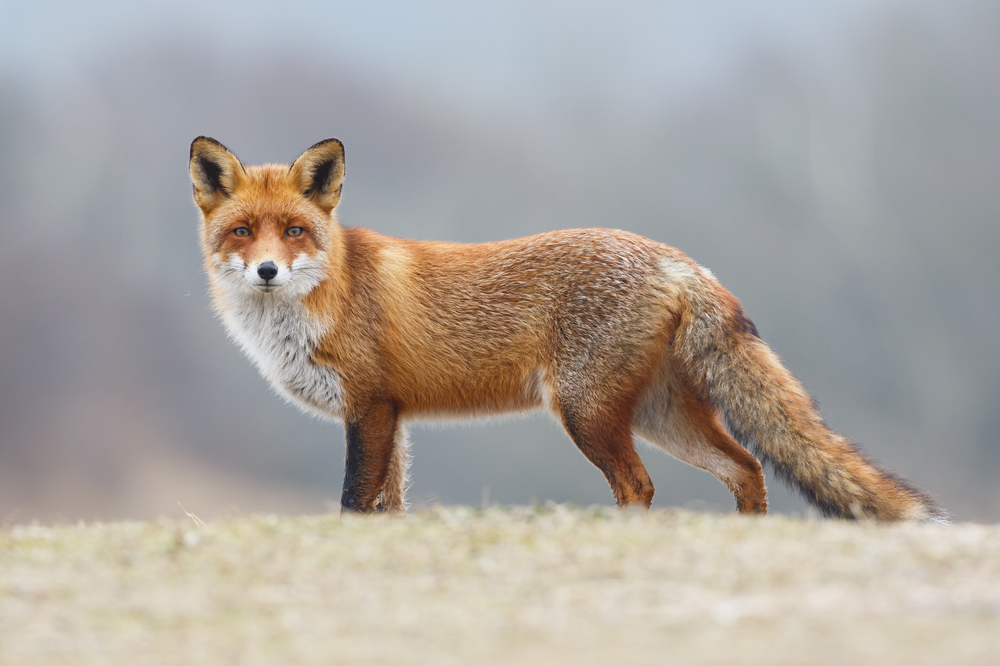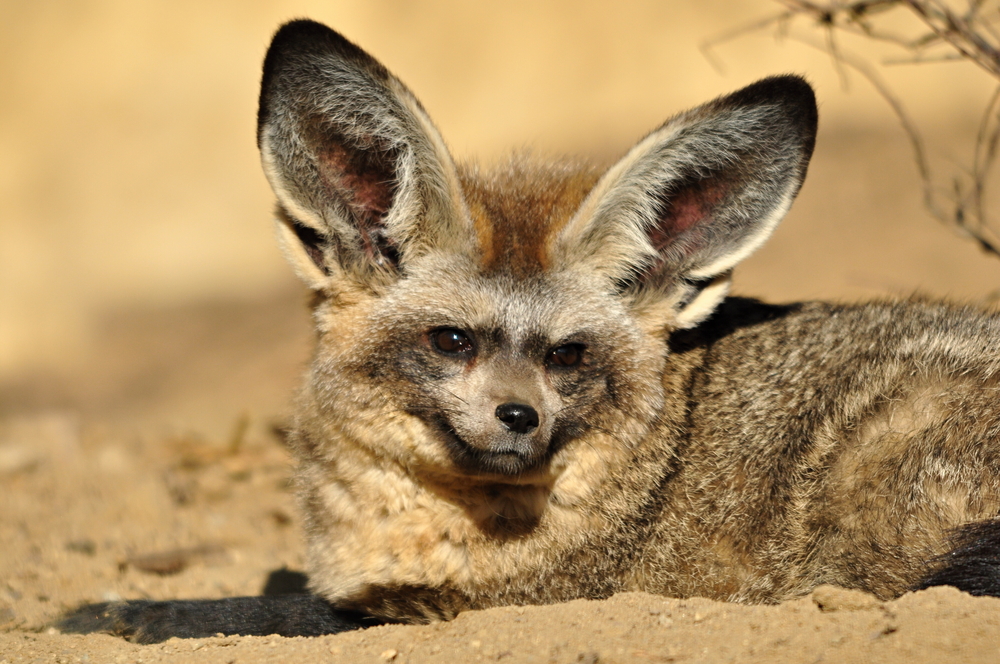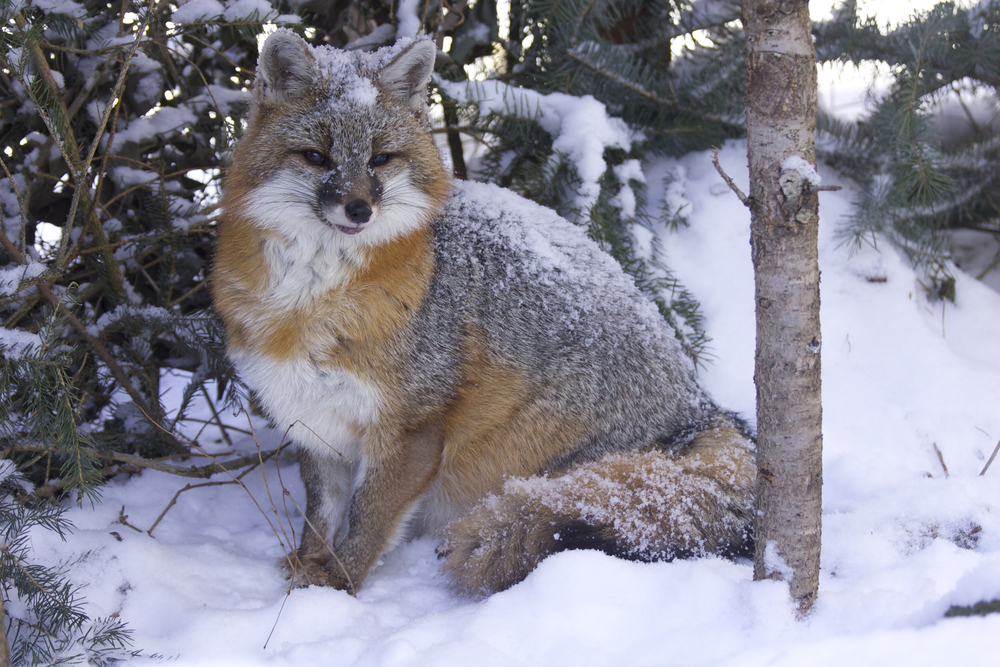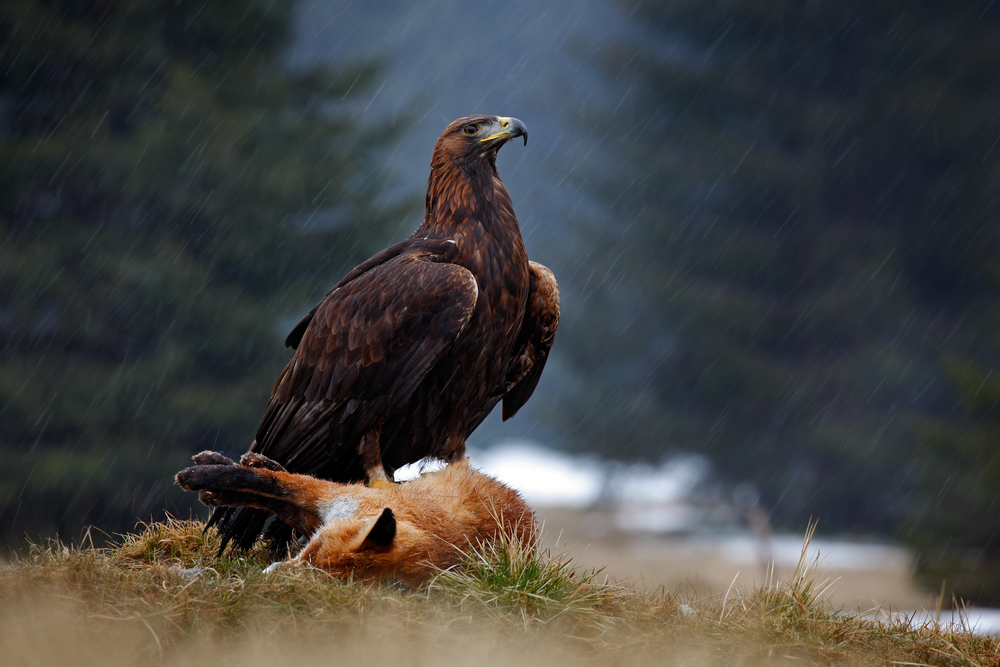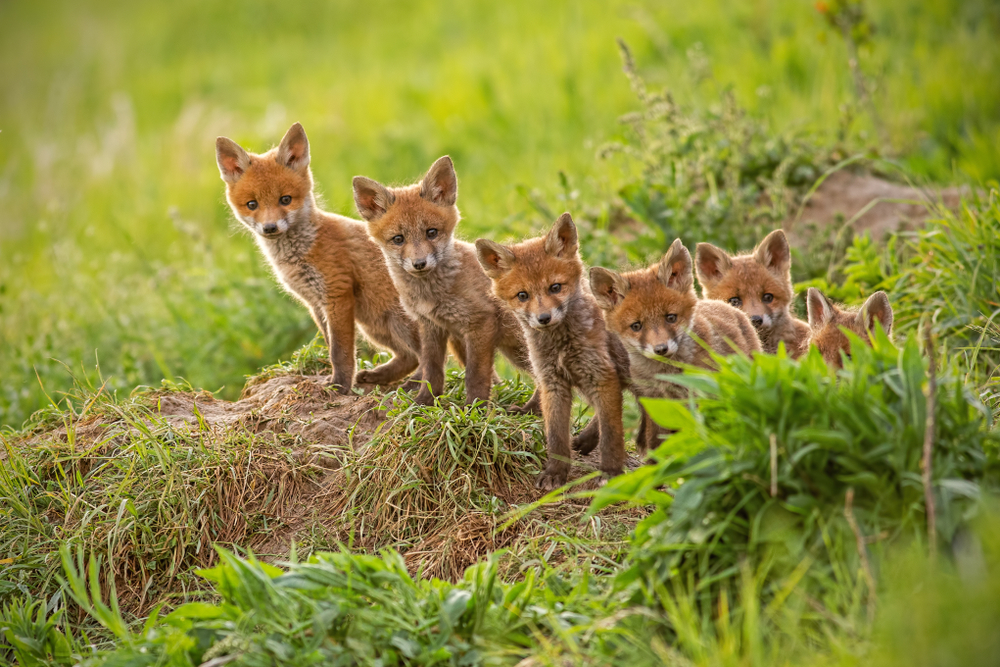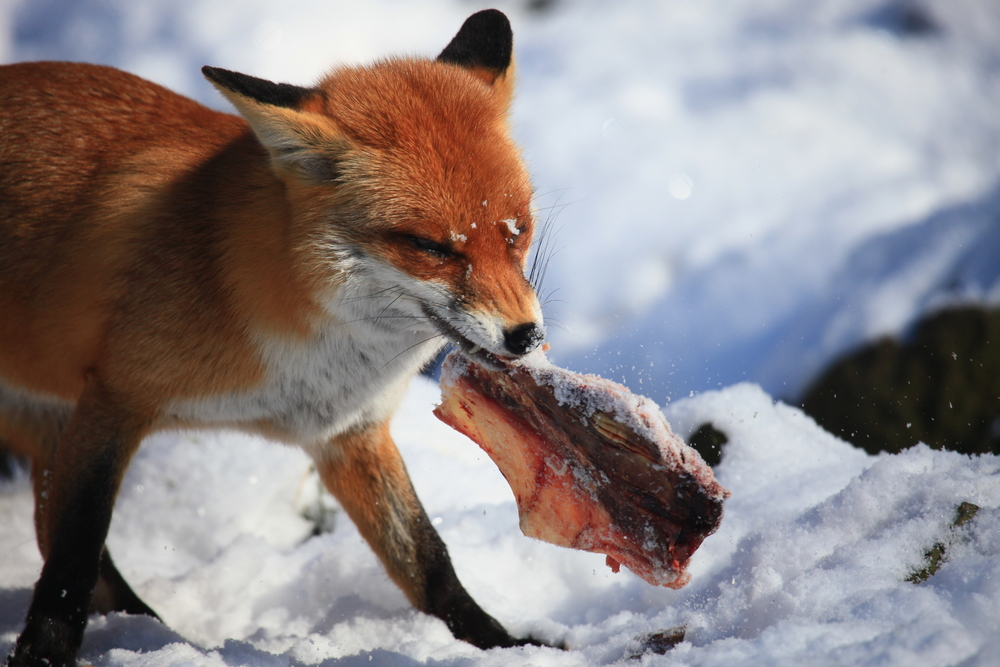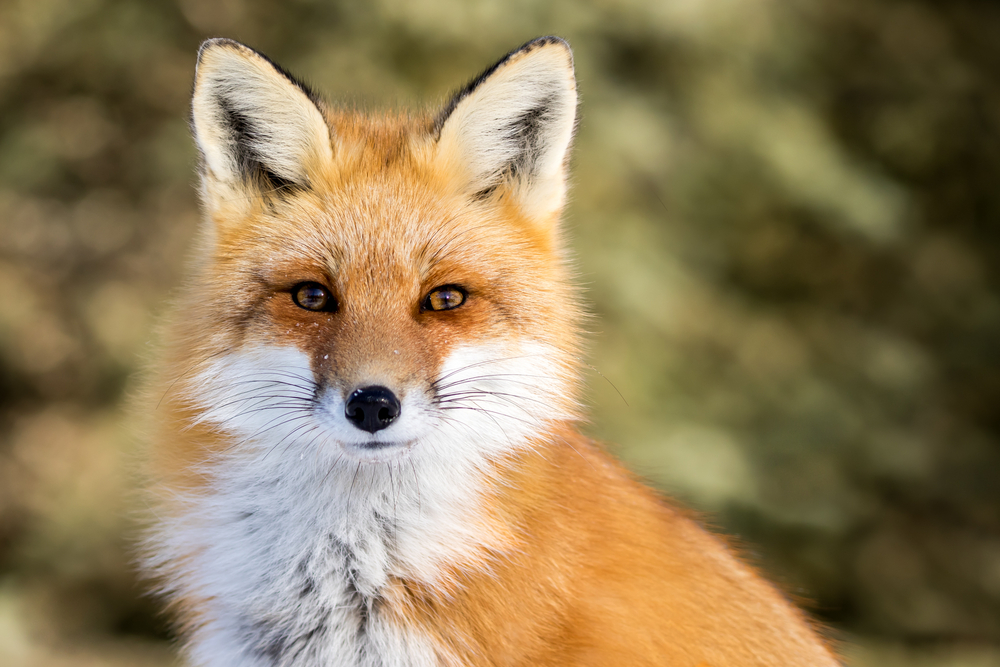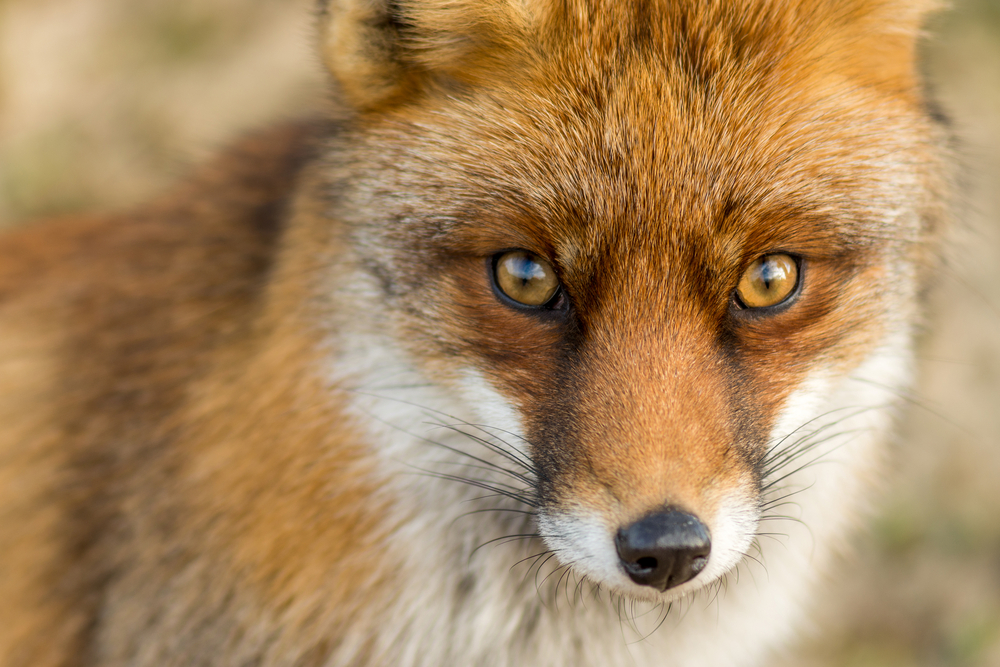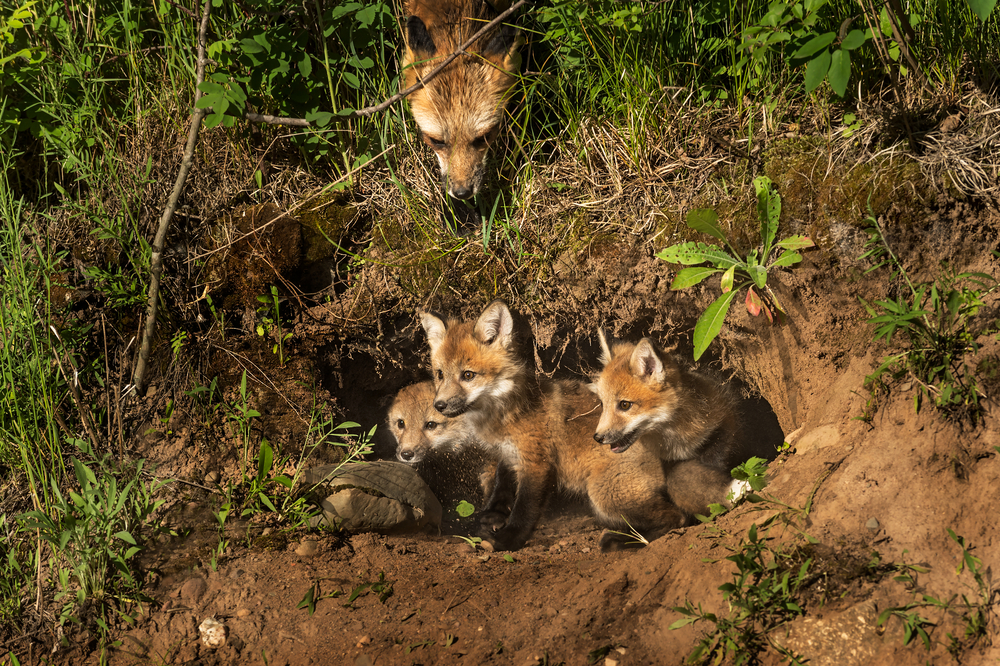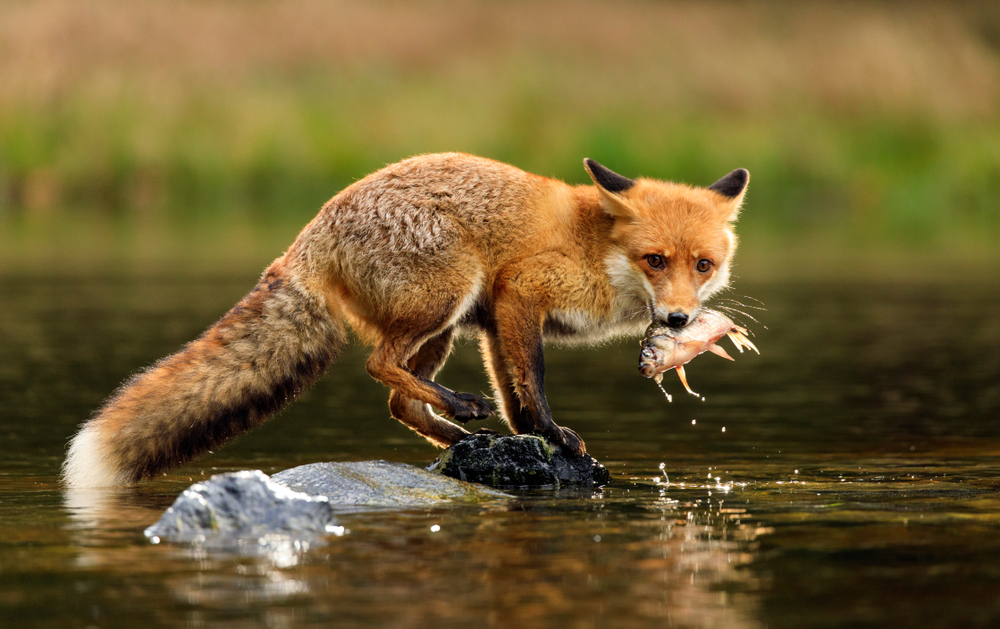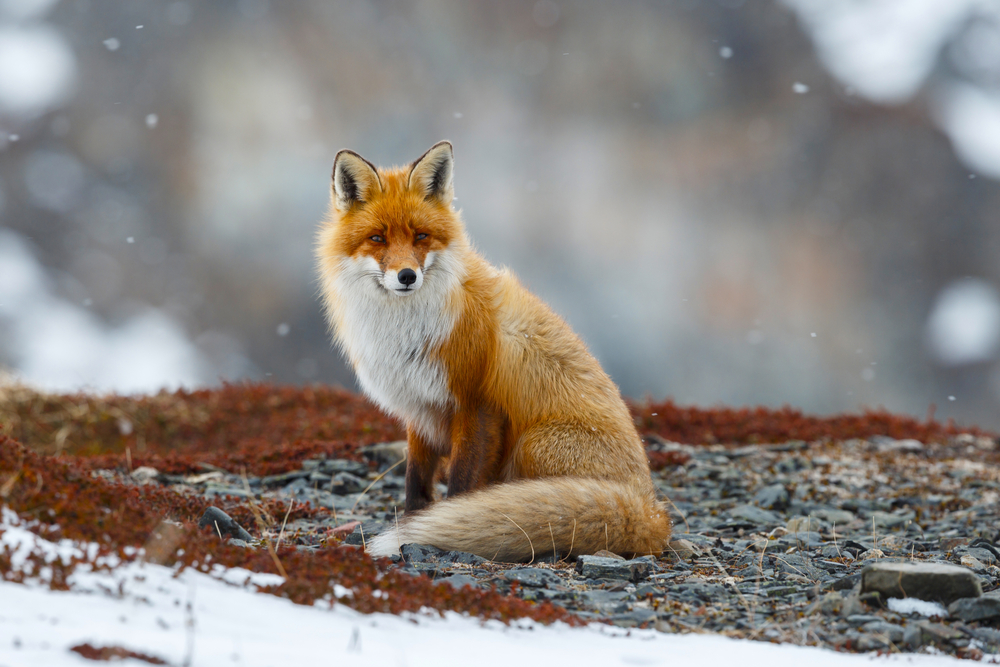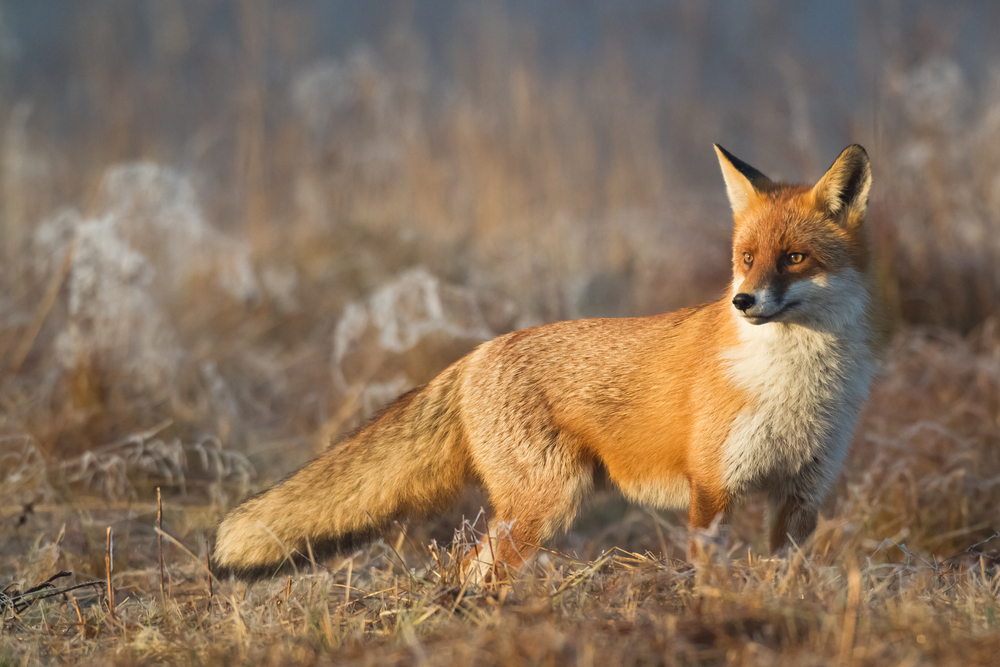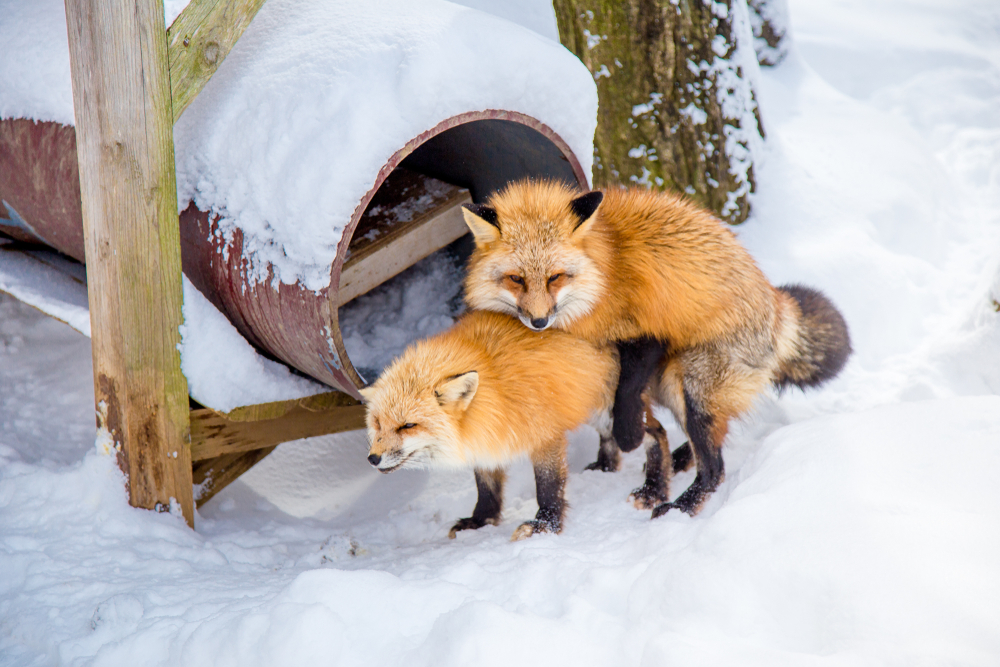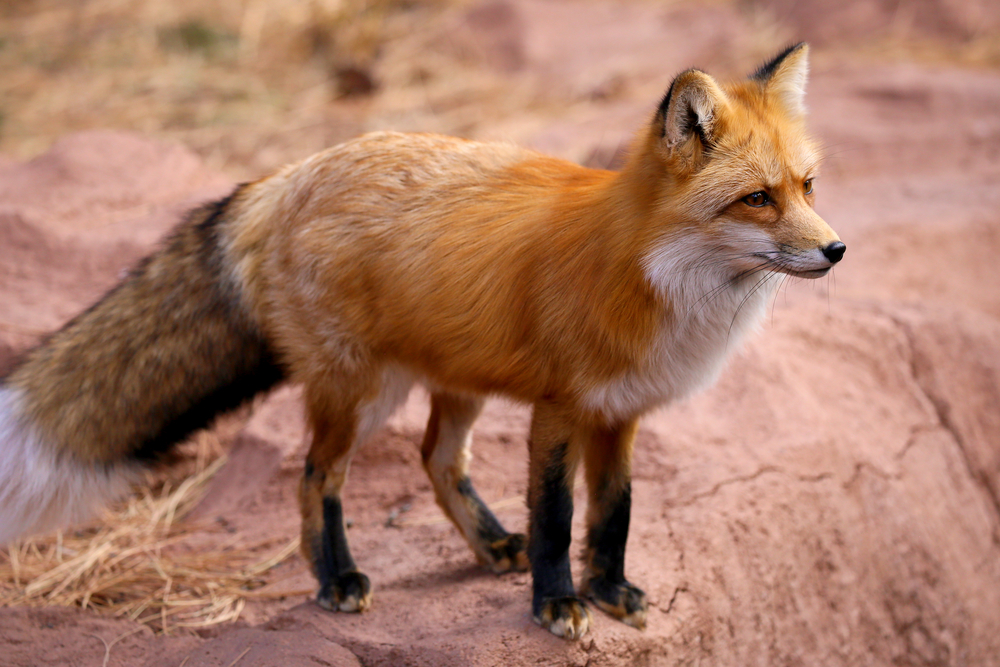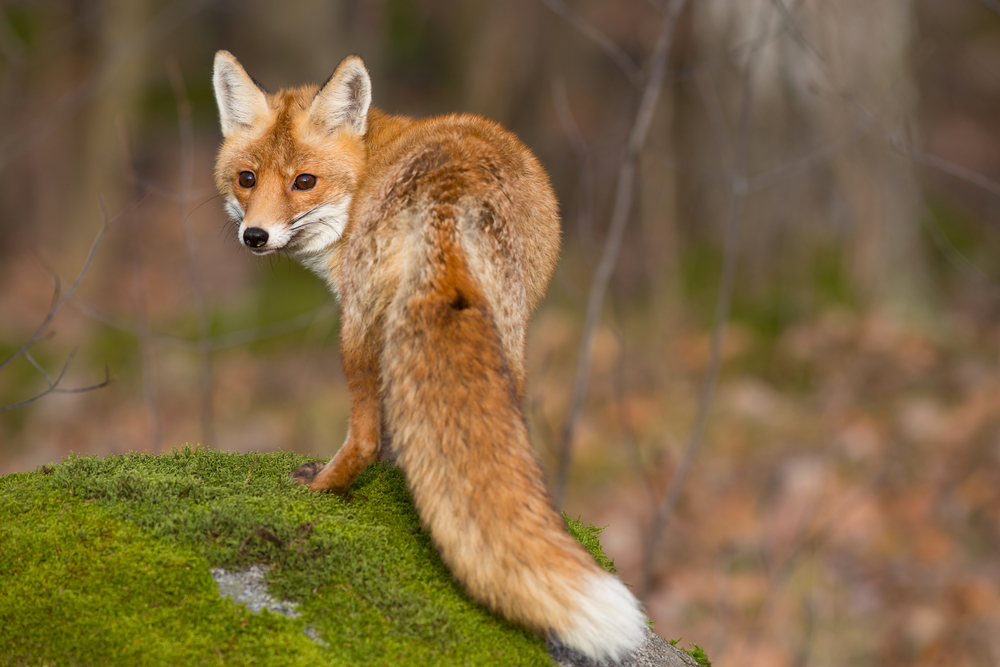About
The Red Fox, scientifically known as Vulpes vulpes, belongs to the Animal Kingdom’s phylum Chordata and class Mammalia. It is a member of the Canidae family, which includes other canids like wolves, coyotes, and jackals. Red foxes are widely distributed across Europe, Asia, North Africa, and North America, as well as in Australia, where they were introduced.
These medium-sized carnivores are known for their distinctive reddish-orange fur, though their coloration can vary from red to gray or even black. They have a bushy tail tipped with white, pointed ears, and a long, slender muzzle. Red foxes have keen senses, including sharp eyesight, acute hearing, and a keen sense of smell, which aids them in hunting and detecting prey.
Red foxes are adaptable predators with a varied diet, feeding on small mammals, birds, insects, fruits, and carrion. They are skilled hunters, employing stalking and pouncing techniques to catch their prey. Red foxes are primarily nocturnal but may also be active during the day, particularly in areas with less human disturbance.
Conservation Concerns
Red foxes are not considered threatened or endangered and are not listed on the IUCN Red List. However, they face various conservation challenges in some regions. Habitat loss and fragmentation due to urbanization, agriculture, and deforestation can reduce suitable habitats for red foxes, leading to population declines.
Additionally, red foxes may come into conflict with humans, particularly in areas where they raid poultry farms or prey on domestic pets. Overhunting and trapping for fur in the past have also affected red fox populations, although regulated hunting practices have helped mitigate this threat in many areas.
Physical Characteristics
The Red Fox (Vulpes vulpes) is one of the most widely distributed members of the order Carnivora, known for its striking orange-red fur, bushy tail, and cunning nature. Adapted to diverse habitats including forests, grasslands, mountains, and deserts, the red fox has an extensive range across the Northern Hemisphere and has been introduced to Australia. Here’s a detailed look at the physical characteristics of the red fox:
Size
- Body Length: Adult red foxes typically measure between 18 to 35.5 inches (45 to 90 centimeters) from their head to their body, not including the tail.
- Tail Length: The tail, or “brush,” adds another 12 to 21.75 inches (30 to 55 centimeters) to their length, featuring a distinctive white tip.
- Weight: Red foxes weigh between 6.5 to 24 pounds (3 to 11 kilograms), with males (dogs) usually being slightly larger and heavier than females (vixens).
Physical Characteristics
- Fur: The most notable feature of the red fox is its vibrant red-orange fur, which can vary in color from pale orange to deep red. The fur on the underparts is usually white, while the legs and backs of the ears are often black. The dense fur serves as insulation against cold weather.
- Head: They have a slender, elongated head with a pointed snout. Red foxes are equipped with sharp, pointed teeth and strong jaws.
- Eyes: Their eyes are almond-shaped, with vertical pupils that provide excellent night vision. The eye color is typically yellow or amber.
- Ears: The ears are large, upright, and triangular, helping the fox to detect the faint sounds of prey animals.
- Legs and Paws: Red foxes have slender legs and small, padded paws with sharp claws, suited for their omnivorous diet and for digging their dens.
- Tail: The bushy tail not only serves as a warm cover in cold weather but also aids in balance during fast runs and jumps. The white tip of the tail is a distinguishing feature among fox species.
Behavior and Adaptations
Red foxes are versatile and can adjust to various environments, including urban areas. They are primarily nocturnal but can be seen at dawn and dusk. Red foxes are solitary hunters, feeding on a diet that includes rodents, rabbits, birds, insects, and vegetation. They are known for their “mousing leap,” a distinctive hunting technique where they pounce on their prey from above.
They communicate through a variety of vocalizations, body language, and scent marking. Red foxes are monogamous, with both parents caring for their young, or “kits,” until they are ready to fend for themselves.
The adaptability, intelligence, and varied diet of the red fox have contributed to its success across diverse environments, making it one of the most recognized and widespread wild canids.
Reproduction
Red foxes have a well-defined reproductive cycle adapted to seasonal changes in their environment. Here’s an overview:
Sexual Maturity: Red foxes typically reach sexual maturity at around 10 months to 1 year of age, although this can vary depending on factors such as food availability and population density.
Breeding Season: The breeding season, or rut, for red foxes usually occurs in late winter to early spring, typically between January and March in the northern hemisphere. This timing ensures that offspring are born in spring when food sources are more abundant.
Courtship and Mate Selection: During the breeding season, male red foxes compete for access to females through vocalizations, scent-marking, and sometimes aggressive interactions. Courtship behaviors include chasing, grooming, and vocal displays.
Mating and Gestation: Once a pair forms, mating occurs, often multiple times over a period of several days. After mating, the female undergoes a gestation period lasting approximately 49 to 58 days, during which she prepares a den for the impending birth.
Denning and Birth: Red foxes typically give birth in underground dens, which may be excavated by the foxes themselves or taken over from other animals such as badgers or groundhogs. The female gives birth to a litter of pups, usually ranging from 4 to 6 pups but can be higher in some cases.
Maternal Care: The female provides extensive maternal care to the newborn pups, nursing them and keeping them warm in the den. The male fox often assists by bringing food to the den to feed the female while she nurses the pups.
Weaning and Development: The pups are born blind and helpless but develop rapidly over the first few weeks of life. They open their eyes after about 10 days and begin to explore the den shortly thereafter. At around 3 to 4 weeks of age, they start venturing outside the den and eating solid food regurgitated by the adults.
Independence and Dispersal: As the pups grow, they become more independent and start accompanying their parents on hunting trips. By around 4 to 5 months of age, they are fully weaned and capable of hunting on their own. They may disperse from their natal territory in search of their own home ranges as they reach sexual maturity.
Breeding Success and Population Dynamics: The reproductive success of red foxes depends on factors such as food availability, habitat quality, and predation pressure. In favorable conditions, red fox populations can increase rapidly, but they are also susceptible to fluctuations in prey abundance and disease outbreaks.
Understanding the reproductive cycle of red foxes is essential for managing their populations and conserving their habitat effectively. Conservation efforts focused on maintaining suitable habitats and managing human-wildlife conflicts can help ensure the long-term survival of these adaptable and resourceful carnivores.
Lifespan
The Red Fox (Vulpes vulpes) is one of the most widespread and adaptable carnivores, found throughout much of the Northern Hemisphere in diverse habitats ranging from forests and grasslands to urban areas. Renowned for its cunning behavior and striking red fur, the Red Fox is an opportunistic predator and scavenger, preying on small mammals, birds, insects, and other prey items. These foxes play crucial roles in controlling pest populations and ecosystem dynamics in their respective habitats.
Lifespan in the Wild: In the wild, Red Foxes typically have a lifespan ranging from 2 to 4 years, although some individuals may live longer under favorable conditions. Their lifespan is influenced by various factors, including predation, disease, food availability, habitat quality, and human activities. Red Foxes face natural threats such as predation by larger carnivores like wolves, coyotes, and birds of prey, as well as competition with other predators for food and territory. Additionally, disease outbreaks, especially rabies and sarcoptic mange, can significantly impact fox populations and reduce individual survival rates.
Lifespan in Captivity: In captivity, Red Foxes can have longer lifespans compared to their wild counterparts. When kept in zoos, wildlife rehabilitation centers, or research facilities, where they receive regular food, veterinary care, protection from predators, and suitable habitat conditions, Red Foxes can live up to 10 to 15 years or even longer. The absence of natural threats and access to consistent food, shelter, and medical care contribute to their extended lifespans in captivity.
Threats to the Red Fox:
- Habitat Loss and Fragmentation: Habitat loss and fragmentation due to urbanization, agriculture, deforestation, and land development threaten Red Fox populations by reducing available habitat, limiting dispersal opportunities, and increasing human-wildlife conflicts. Loss of natural habitats deprives foxes of suitable den sites, foraging areas, and territorial ranges, leading to population declines, genetic isolation, and increased vulnerability to predation and disease.
- Human Persecution: Red Foxes are often subjected to human persecution, including hunting, trapping, poisoning, and culling, due to perceived threats to livestock, poultry, game species, and property interests. Despite legal protections in some regions, foxes may still be targeted by individuals who view them as pests or nuisances, leading to mortality, habitat disturbance, and disruptions to ecosystem dynamics.
- Road Mortality: Red Foxes are susceptible to road mortality and vehicle collisions, especially in areas where roads intersect with their habitat or migration routes. Collisions with vehicles can result in fatal injuries, population fragmentation, and genetic isolation, particularly in fragmented landscapes and urbanized areas where road networks pose significant barriers to wildlife movement and dispersal.
- Disease Outbreaks: Red Fox populations are susceptible to disease outbreaks, including rabies, canine distemper, parvovirus, and sarcoptic mange, which can spread rapidly and cause high mortality rates among infected individuals. Disease outbreaks can weaken fox populations, disrupt social structures, reduce reproductive success, and have cascading effects on ecosystem health and biodiversity.
- Invasive Species: Competition and predation by invasive species such as domestic dogs, cats, and non-native predators can pose threats to Red Fox populations by displacing native foxes, depleting prey resources, and introducing novel diseases. Invasive species can outcompete foxes for food and territory, leading to declines in fox abundance and distribution, especially in anthropogenically modified landscapes.
Conservation efforts focused on habitat protection, habitat restoration, wildlife corridors, predator-friendly land management practices, disease surveillance and management, public education, and conflict mitigation strategies are crucial for mitigating these threats and ensuring the long-term survival of Red Fox populations across their range. Collaboration among government agencies, conservation organizations, landowners, and the public is essential for implementing effective conservation measures and promoting coexistence between humans and foxes in shared landscapes.
Eating Habits
The Red Fox (Vulpes vulpes) is a highly adaptable mammal found across a wide range of habitats in the Northern Hemisphere. As an omnivorous carnivore, its eating habits are diverse and play a crucial role in its survival and ecological interactions.
Diet: Red Foxes have a varied diet that includes small mammals, birds, insects, fruits, berries, and carrion. They are opportunistic feeders and will consume whatever food is readily available in their environment. Their diet may vary depending on factors such as location, season, and prey availability.
Hunting Behavior: Red Foxes are skilled hunters with keen senses of sight, smell, and hearing. They use a combination of stalking, pouncing, and chasing techniques to capture prey. Their agile and swift movements enable them to pursue small mammals and birds through various terrains, including forests, grasslands, and urban areas.
Foraging Strategy: Red Foxes employ a range of foraging strategies to obtain food. They may hunt alone or in pairs, but they are primarily solitary hunters. They patrol their territories, sniffing and searching for signs of prey activity. In addition to hunting, they scavenge for carrion and may raid garbage bins or scavenger sites for human refuse.
Prey Selection: Red Foxes are opportunistic feeders and will consume a wide variety of prey species. Their diet may include rodents such as mice, voles, and rabbits, as well as birds, amphibians, reptiles, insects, and invertebrates. They may also feed on fruits, berries, and agricultural crops when animal prey is scarce.
Feeding Behavior: After capturing or scavenging food, Red Foxes typically consume it on-site or carry it back to their den or another secluded location to feed. They use their sharp teeth and strong jaws to tear into prey and consume it in bite-sized pieces. Larger prey items may be cached or stored for later consumption.
Nutritional Requirements: Red Foxes require a balanced diet rich in protein, fat, and carbohydrates to meet their nutritional needs and maintain their energy levels. They rely on a diverse range of prey species to fulfill their dietary requirements and adapt their feeding behavior accordingly.
Interactions with Other Species: Red Foxes play an important role in ecosystem dynamics as both predators and scavengers. They help regulate populations of small mammals and birds, and their scavenging behavior helps recycle nutrients in the environment. However, they may also compete with other predators for food resources and occasionally prey on domestic livestock, leading to conflicts with humans.
Conservation Status: The Red Fox is not considered threatened or endangered, and its populations are generally stable across much of its range. However, habitat loss, fragmentation, and human persecution pose ongoing threats to local populations, particularly in areas where they come into conflict with humans over resources. Conservation efforts focused on habitat preservation and coexistence strategies are essential for ensuring the continued survival of Red Fox populations.
Uniqueness
The Red Fox (Vulpes vulpes) is a highly adaptable and widely distributed member of the canine family known for its intelligence, agility, and striking red coat. Here are some key aspects that make the Red Fox unique:
Adaptability: Red foxes are incredibly adaptable animals, found in a wide range of habitats across the Northern Hemisphere, including forests, grasslands, deserts, and urban areas. They are equally comfortable in rural and urban environments, displaying remarkable flexibility in their diet and behavior.
Distinctive Appearance: Red foxes are easily recognizable by their beautiful red or reddish-brown fur, which provides excellent camouflage in many environments. They have white fur on their chest and belly, as well as black markings on their ears, legs, and the tip of their tail. Their bushy tail, or “brush,” is one of their most distinctive features.
Nocturnal and Crepuscular: Red foxes are primarily nocturnal and crepuscular, meaning they are most active during the night and twilight hours. However, they may also be active during the day, especially in areas with less human activity. Their nocturnal habits help them avoid predators and hunt more effectively.
Opportunistic Diet: Red foxes are opportunistic omnivores, meaning they will eat a wide variety of foods depending on what is available. Their diet includes small mammals, birds, insects, fruits, berries, carrion, and even human garbage. This adaptability allows them to thrive in diverse environments and seasons.
Social Structure: Red foxes are typically solitary animals, but they may form small family groups during the breeding season or when raising young. Family groups consist of a dominant breeding pair and their offspring from previous years. Red foxes communicate with each other using a variety of vocalizations, body language, and scent markings.
Denning Behavior: Red foxes often use underground dens for shelter, protection, and raising their young. They may excavate their own dens or repurpose abandoned burrows dug by other animals. Dens are typically located in secluded areas, such as wooded areas, hedgerows, or embankments.
Reproduction: Red foxes breed once a year, usually in late winter or early spring. After a gestation period of about 52 days, females give birth to a litter of 4 to 6 pups, known as kits. The parents work together to care for and protect the young until they are old enough to fend for themselves.
Cultural Significance: Red foxes hold cultural significance in many societies around the world and feature prominently in folklore, mythology, and literature. They are often portrayed as cunning and intelligent creatures, capable of outsmarting their adversaries with clever tricks and strategies.
Red foxes’ unique combination of adaptability, intelligence, and beauty makes them one of the most iconic and widely recognized wild animals in the world. Despite facing threats such as habitat loss and persecution, red fox populations remain stable and continue to thrive in diverse habitats across their range.
Related Family Species
Sources
- Britannica, Red Fox, https://www.britannica.com/animal/red-fox-mammal, retrieved November 2023
- Burnie, David & Wilson, Don, Animal, Smithsonian Institute, Washington DC.
- Hickman et al, Integrated Principle of Zoology, McGraw Hill, Boston.



































































